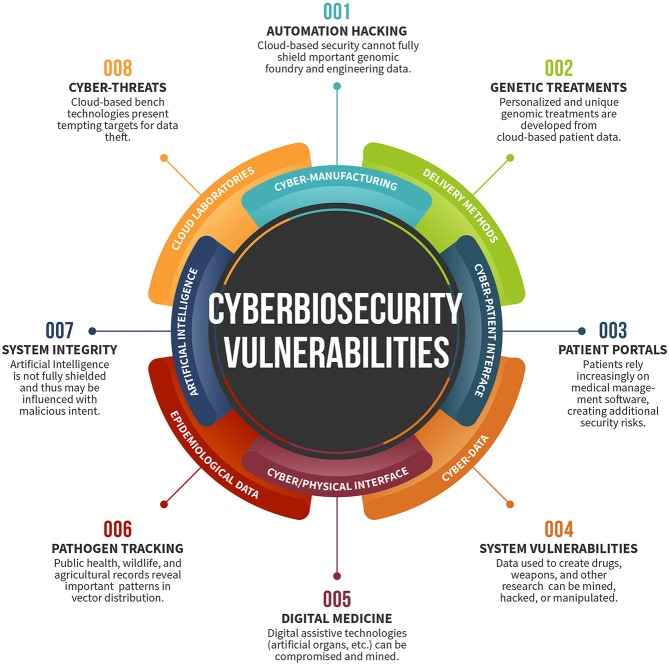Bio-Cybersecurity at CSU
Bio-cybersecurity (or cyberbiosecurity) is the intersection of biotechnology, biosecurity, and cybersecurity issues. It is part of an effort to “safeguard the bioeconomy”, an objective described by the National Academies of Sciences, Engineering and Medicine of the United States. The term “cyberbiosecurity” was formerly proposed in 2018 to encompass the emerging discipline at the interface of cybersecurity, cyber-physical security, and biosecurity as applied to biological and biomedical-based systems. This terminology and concept was co-originated by CSU Professor Jean Peccoud.
Traditionally, biosecurity focuses on reducing risks associated with the misuse of life science tools and/or knowledge, whereas cybersecurity is focused on securing information in technology-based systems. The objective of the merged discipline of cyberbiosecurity is to address “the potential for or actual malicious destruction, misuse, or exploitation of valuable information, processes, and material at the interface of the life sciences and digital worlds”. Read more about cyberbiosecurity.

CSU is uniquely positioned to explore the vulnerabilities of life sciences and the bio-economy to increasing cybersecurity threats and to develop solutions. We have unique assets in biomanufacturing and large databases of discovery research in infectious disease, climate, and agriculture. Addressing these challenges will require multidisciplinary research collaboration and new educational efforts.
Alan Rudolph, Vice President for Research